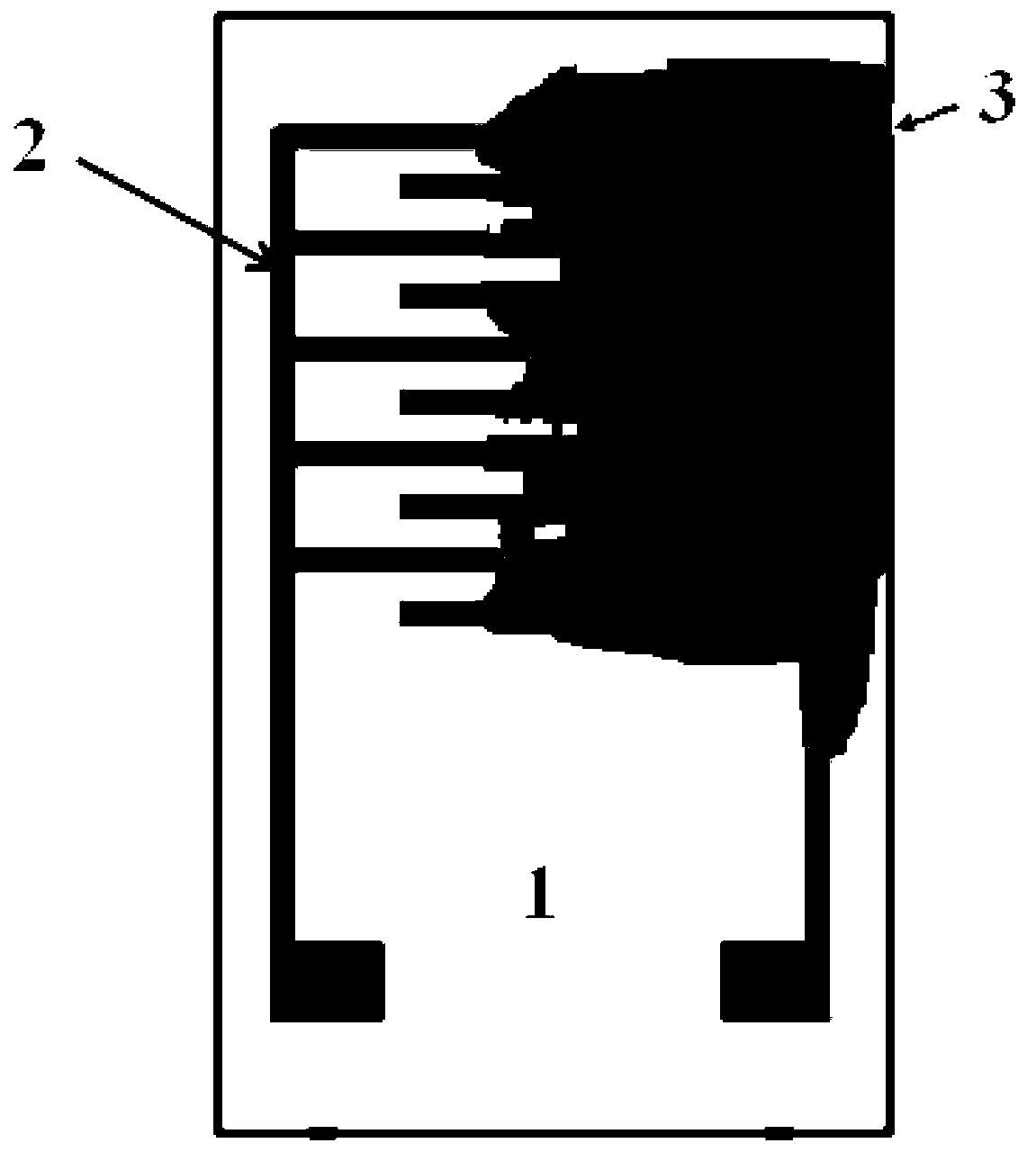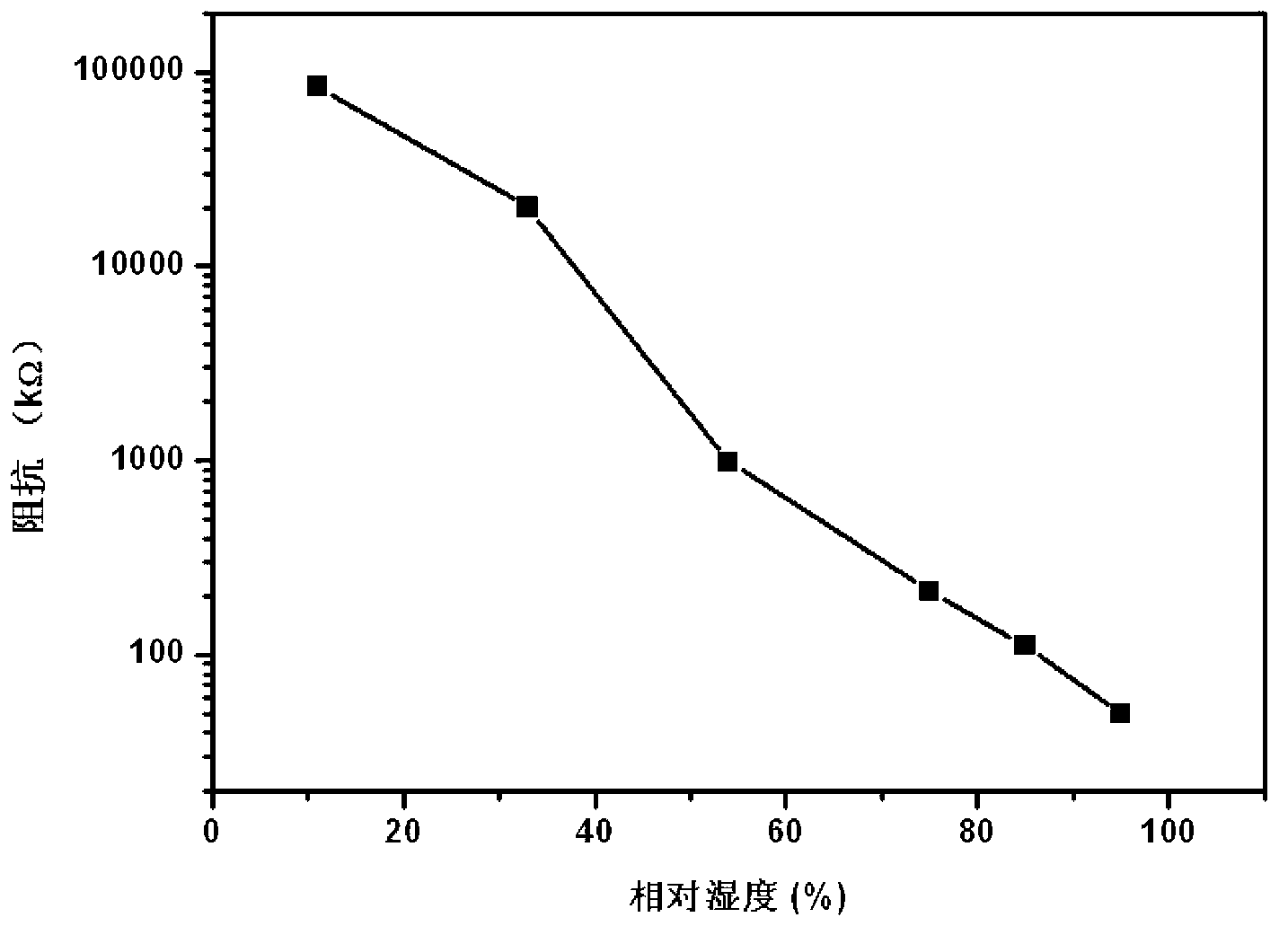Moisture-sensitive sensor based on potassium tantalite sensitive membrane and preparation method thereof
A humidity sensor, potassium tantalate technology, applied in the direction of material impedance, etc., to achieve the effects of low cost, good detection performance, and simple process
- Summary
- Abstract
- Description
- Claims
- Application Information
AI Technical Summary
Problems solved by technology
Method used
Image
Examples
Embodiment 1
[0033] First, wipe the ceramic substrate with acetone and ethanol cotton balls until it is clean, then place the substrate in acetone, ethanol and deionized water in sequence, ultrasonically clean it for 5 minutes, and finally dry it at 100°C for later use;
[0034] Au metal interdigitated electrodes were prepared by screen printing technology. According to the mass ratio of ink (Jiahua JX07500487): Au powder: diluent (ethanol: ethyl acetate = 1.5:1), the mass ratio was 1:1.5:3, and stirred Prepare a paste; then inject the paste on the screen plate with the interdigitated electrode pattern, scrape the paste with an inclination angle of 30 degrees and a pressure of 5 N, print the electrode and dry it, and then use ultraviolet light After curing for 400s, metal interdigitated electrodes were prepared.
[0035] Preparation of potassium tantalate by hydrothermal method: Dissolve 4 g of potassium hydroxide in 10 mL of water at room temperature, stir the solution until it becomes cl...
Embodiment 2
[0039] First, wipe the substrate with acetone and ethanol cotton balls until it is clean, then place the substrate in acetone, ethanol and deionized water in sequence, ultrasonically clean it for 5 minutes, and finally dry it at 100°C for later use;
[0040] The preparation process of the Au metal interdigitated electrode is the same as that in Example 1.
[0041] Potassium tantalate was prepared by hydrothermal method: the experimental process was the same as in Example 1.
[0042] Put the dried potassium tantalate into a mortar and grind for 30 minutes; then drop deionized water into the mortar, and continue grinding for 30 minutes, so that the deionized water and materials are fully mixed to form a viscous slurry. . Dip a small amount of the sensitive film slurry with a spatula, coat it on the substrate, the number of coatings is 2 times, and then dry it at 60°C to obtain an element with a sensitive film thickness of 3 μm. Place the element prepared above in a humidity so...
Embodiment 3
[0045] First, wipe the substrate with acetone and ethanol cotton balls until it is clean, then place the substrate in acetone, ethanol and deionized water in sequence, ultrasonically clean it for 5 minutes, and finally dry it at 100°C for later use;
[0046] The preparation process of the Au metal interdigitated electrode is the same as that in Example 1.
[0047] Potassium tantalate was prepared by hydrothermal method: the experimental process was the same as in Example 1.
[0048] Put the dried potassium tantalate into a mortar and grind for 30 minutes; then drop deionized water into the mortar, and continue grinding for 30 minutes, so that the deionized water and materials are fully mixed to form a viscous slurry. . Dip a small amount of the sensitive film slurry with a spatula, coat it on the substrate for 3 times, and then dry it at 60°C to obtain an element with a sensitive film thickness of 4 μm. Place the element prepared above in a humidity source with a relative hu...
PUM
| Property | Measurement | Unit |
|---|---|---|
| Thickness | aaaaa | aaaaa |
| Particle size | aaaaa | aaaaa |
| Size | aaaaa | aaaaa |
Abstract
Description
Claims
Application Information
 Login to View More
Login to View More - R&D
- Intellectual Property
- Life Sciences
- Materials
- Tech Scout
- Unparalleled Data Quality
- Higher Quality Content
- 60% Fewer Hallucinations
Browse by: Latest US Patents, China's latest patents, Technical Efficacy Thesaurus, Application Domain, Technology Topic, Popular Technical Reports.
© 2025 PatSnap. All rights reserved.Legal|Privacy policy|Modern Slavery Act Transparency Statement|Sitemap|About US| Contact US: help@patsnap.com



